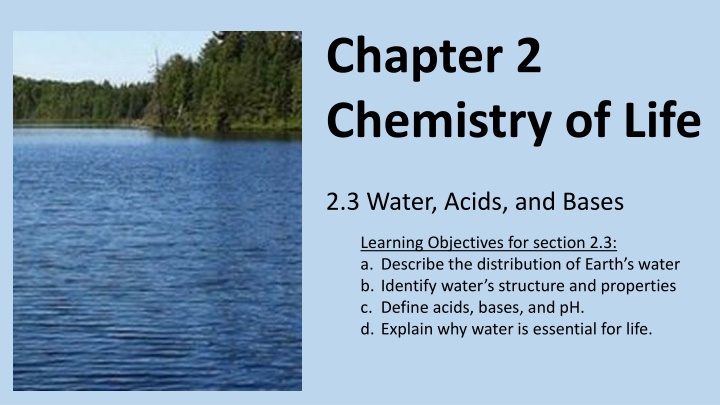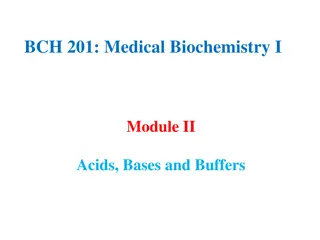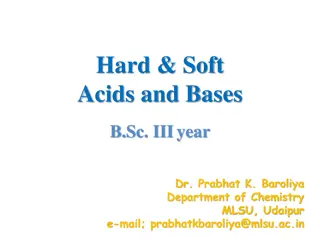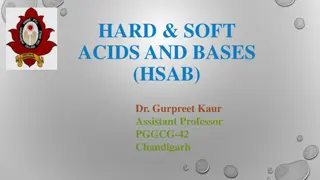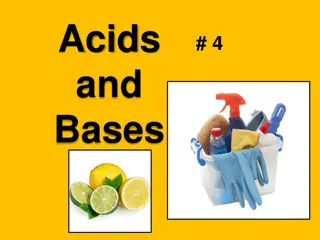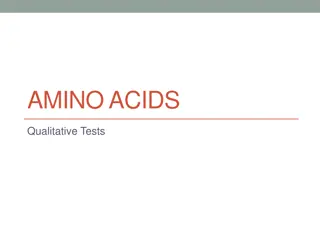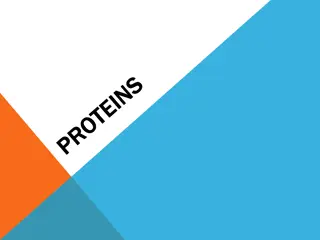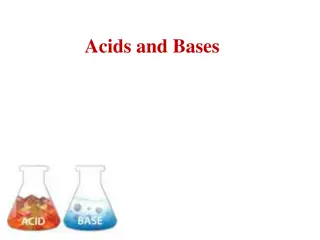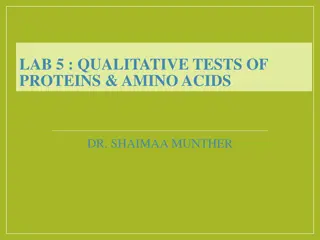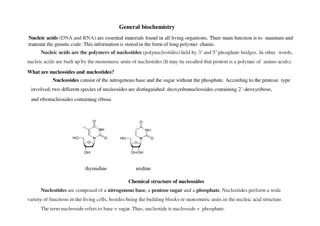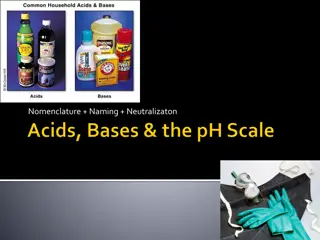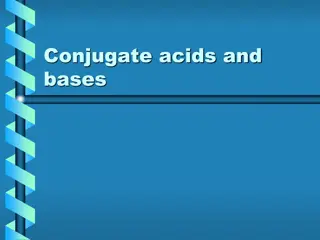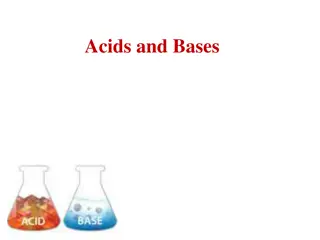Water, Acids, and Bases in Chemistry
Water is a vital substance on Earth, with its unique structure and properties making it essential for life. This chapter delves into the distribution of Earth's water, the chemical composition of water, the concepts of acids, bases, and pH, and how water's properties are influenced by hydrogen bonding. Exploring these fundamental aspects provides insights into the role of water in sustaining life and understanding chemical reactions.
Download Presentation

Please find below an Image/Link to download the presentation.
The content on the website is provided AS IS for your information and personal use only. It may not be sold, licensed, or shared on other websites without obtaining consent from the author.If you encounter any issues during the download, it is possible that the publisher has removed the file from their server.
You are allowed to download the files provided on this website for personal or commercial use, subject to the condition that they are used lawfully. All files are the property of their respective owners.
The content on the website is provided AS IS for your information and personal use only. It may not be sold, licensed, or shared on other websites without obtaining consent from the author.
E N D
Presentation Transcript
Chapter 2 Chemistry of Life 2.3 Water, Acids, and Bases Learning Objectives for section 2.3: a. Describe the distribution of Earth s water b. Identify water s structure and properties c. Define acids, bases, and pH. d. Explain why water is essential for life.
Water, Acids, and Bases Water is a common chemical substance on Earth. Almost 75% of the planet is covered in water. - 97% of that water is salt water ocean - 3% is freshwater - 68% of all freshwater is locked in ice caps and glaciers (although that is changing) - 30% is ground water - 2% is surface water - 87% of the surface water is found in lakes - 11% is located in swamps - 2% is found in our rivers
Chemical Structure of Water Water is made up of one atom of oxygen and two atoms of hydrogen. Oxygen The oxygen atom in a water molecule attracts electrons more strongly than the hydrogen atoms. Hydrogen Hydrogen The result is that the oxygen side of the molecule is slightly negative while the hydrogen side is more positive. The difference in electrical charges on different sides of a molecule is called polarity. Water is a polar molecule.
Hydrogen bonding explains much about the various properties of water.
The scale is logarithmic. Each value, from 0 14, has 10 times greater ion concentration than the value below it. pH 5 is 10 times more acid than pH 6.
